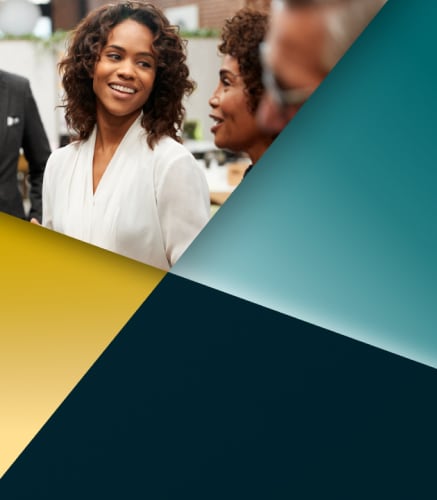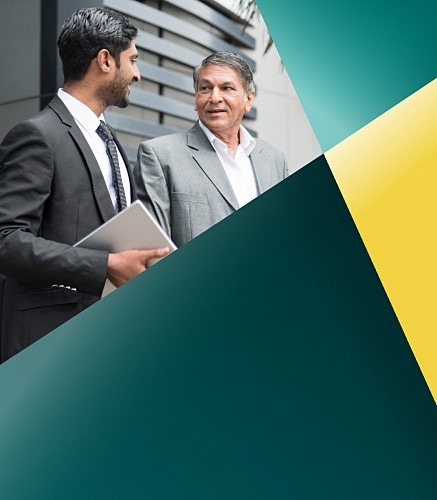Philanthropically minded families are finding new ways to broaden their impact and help address the issues facing society.
Jane Flanagan, Director of Family Office Advisory at Northern Trust, sat down with Marguerite Griffin, Director of Philanthropic Advisory Services, to discuss some of the interesting philanthropic strategies that Marguerite and her team are seeing clients consider in today’s climate.
Jane Flanagan: Marguerite, we know that the vast majority of our clients have family foundations and are philanthropically inclined. In today’s world, there seems to be many areas of crisis and need. What are you seeing families doing to help make a difference?
Marguerite Griffin: We have been noticing a trend over the last 5-10 years of individuals and families who have private foundations, also using donor advised funds to achieve their philanthropic goals. These families are using their private foundations, which may perhaps be very mission-driven and focused on specific areas. They also have donor advised funds, which are generally more flexible. These families are using assets that are already in their donor advised funds to be responsive to local and global needs.
In other words, while the missions of their foundations might be for education, disadvantaged students or other causes, donor advised funds don’t necessarily have mandates for specific causes, so they’re using it to get funds to organizations that are helping people who find themselves experiencing homelessness, or in need of medical assistance or care. Individuals and families are using their philanthropic capital to provide just-in-time relief, to alleviate human suffering, to address disaster recovery, to get money to food banks and homeless shelters. Many organizations, including Northern Trust, are helping those who want to make a difference conduct the necessary due diligence, evaluations and research to identify effective charitable organizations that are doing critical and timely work on the front lines.
“Families are using charitable assets that are already in their donor advised funds to be responsive to what’s going on now.”
JF: This is wonderful, Marguerite, to see families getting creative and using donor advised funds and their own ingenuity to help others. We know that uncertainty about the economy can impact family philanthropy and the organizations that families support. What are you seeing families doing differently to cope with that uncertainty?
MG: While the outlook for inflation and interest rates is unclear, several of our clients have committed to “scaling up” their charitable efforts by adding more assets to their foundations. They are asking themselves critical questions such as:
- What would it mean if we were to double the size of our foundation?
- How can we continue the work that we’ve been doing, but have an even greater impact?
- What kind of infrastructures do we need to create, or put in place, to do the most good now?
Many of these clients are also thinking more strategically about their philanthropy. They are considering how they can stay true to their charitable missions and help individuals and families get through this period of greater need. They are considering ways to be engaged with local, municipal and governmental groups that are providing housing aid and food pantries, for example. There are a lot of opportunities for private and public partnerships during this time. Certainly, local, municipal and governmental groups could do even more with additional resources provided by the private sector.
JF: So it sounds like the markets don’t slow families down, philanthropically, at all. Before we leave our listeners today, what is one piece of advice you would like them to consider?
MG: Think about how we can be good neighbors and good citizens. There are many ways to give back. One of the best is the giving of time, or the giving of networks – by thinking about who you know and how they can be mobilized to assist. There are many families who want to step up and do more with their financial resources, and there’s satisfaction in taking action.
It is important to identify what’s important to you and your family, and re-think, perhaps, how your previous giving practices have been aligned with your goals. This isn’t to abandon that giving history, but to ask yourself, in addition to what you’re already doing, “What else can we do?”
This could be reactive to what you’re seeing, but it could also be personal based on how you’ve been touched or influenced by today’s issues. For example, if the traffic at your local food pantry has increased, consider donating or volunteering to help out. For older neighbors who are affected by the high price of gasoline, consider offering them rides to their medical appointments. Or reach out to your local school to see if they have technology needs, such as computers or other resources, and do what you can to assist their efforts.
Also, think about how you can instill and infuse your children with an understanding of how they fit within the larger community – whether local, national or global – and help them think about how to be good neighbors. Are there things they can do to help in today’s world?
JF: Marguerite, thank you very much for your time and your perspective. For our readers, we invite you to review the following resource to learn more.
Recommended Reading: Engaging the Next Generation in Philanthropy








